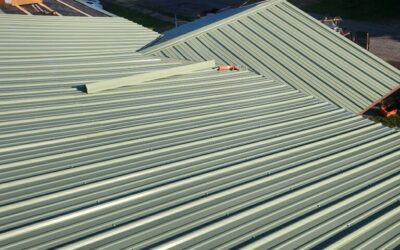Slate roofing is renowned for its timeless beauty, exceptional durability, and long lifespan. Often referred to as the “forever roof,” slate has been a preferred roofing material for centuries, gracing everything from historic landmarks to modern luxury homes. In this comprehensive guide, we’ll delve into the history, benefits, drawbacks, costs, installation process, maintenance, and alternatives to slate roofing, providing you with all the information needed to make an informed decision.
🏛️ A Brief History of Slate Roofing
Slate has been used as a roofing material for over 700 years, with the earliest recorded use dating back to the 13th century in North Wales. Its popularity spread across Europe and eventually to North America, where it became a staple in architectural design during the 19th and early 20th centuries. The first American slate quarry opened in 1734 on the border between Pennsylvania and Maryland, marking the beginning of slate’s prominence in the U.S. roofing industry.
✅ Benefits of Slate Roofing
1. Unmatched Longevity
One of the most significant advantages of slate roofing is its longevity. When properly installed and maintained, a slate roof can last between 60 to 150 years, with some lasting even longer. (
2. Natural Beauty
Slate offers a distinctive, elegant appearance that enhances the curb appeal of any home. Available in various colors, sizes, and textures, slate can complement a wide range of architectural styles.
3. Fire Resistance
Being a natural stone, slate is non-combustible, providing excellent fire resistance and adding an extra layer of protection to your home.
4. Eco-Friendly
Slate is a sustainable roofing option. Its long lifespan means fewer replacements, reducing the demand for new materials and minimizing waste. Additionally, slate is a natural product that doesn’t emit harmful pollutants during manufacturing.
5. Low Maintenance
Once installed, slate roofs require minimal maintenance. They are resistant to mold, mildew, and insect damage, and their durability means fewer repairs over time
❌ Drawbacks of Slate Roofing
1. High Initial Cost
Slate roofing is among the most expensive roofing materials. The cost of materials and specialized labor can be significantly higher than other roofing options.
2. Heavy Weight
Slate is a heavy material, often weighing between 800 to 1,500 pounds per square (100 square feet). This weight may require additional structural support, increasing the overall cost and complexity of the installation.
3. Fragility
While durable, slate is also brittle. Walking on a slate roof can cause tiles to crack or break, making inspections and repairs more challenging. (Brava Roof Tile, Skywalker Roofing)
4. Complex Installation
Installing a slate roof requires specialized skills and experience. Not all roofing contractors are equipped to handle slate installations, which can limit your options and increase labor costs.
💰 Cost of Slate Roofing
Material Costs
Natural slate tiles typically cost between $10 to $30 per square foot. (This Old House)
Installation Costs
Including materials and labor, the total cost of installing a slate roof can range from $15 to $30 per square foot, depending on factors like roof complexity and regional labor rates. (Bill Ragan Roofing)
Repair Costs
Repairing a slate roof can be costly, with average repair costs ranging from $784 to $3,244, depending on the extent of the damage and the specific repairs needed. (Angi)
🛠️ Installation Process
Installing a slate roof involves several critical steps:
- Structural Assessment: Ensure the building can support the weight of a slate roof.
- Deck Preparation: Install a solid roof deck, typically made of 3/4-inch thick wood.
- Underlayment Installation: Apply a high-quality underlayment to provide additional moisture protection.
- Slate Installation: Lay the slate tiles in overlapping rows, securing each with copper or stainless-steel nails.
- Flashing and Ridge Cap Installation: Install flashing around roof penetrations and a ridge cap at the roof’s peak.(jenkinsslate.com)
Due to the complexity of the installation, it’s essential to hire experienced professionals specializing in slate roofing.
🧰 Maintenance Tips
To ensure the longevity of your slate roof:
- Regular Inspections: Conduct annual inspections to identify and address any issues early.
- Prompt Repairs: Replace broken or missing tiles promptly to prevent water infiltration.
- Gutter Maintenance: Keep gutters clean to prevent water backup and potential damage.
- Avoid Walking on the Roof: Use professional services for inspections and repairs to avoid damaging the tiles.
🆚 Synthetic Slate: An Alternative
For those seeking the aesthetic appeal of slate without the associated costs and weight, synthetic slate offers a viable alternative.
Benefits of Synthetic Slate
- Lightweight: Easier to install and doesn’t require additional structural support.
- Cost-Effective: Generally less expensive than natural slate.
- Durable: Resistant to impact, fading, and extreme weather conditions.
- Versatile: Available in various colors and styles to match different architectural designs.
Considerations
While synthetic slate is more affordable and easier to install, it may not match the longevity and natural beauty of genuine slate.
🏡 Is Slate Roofing Right for You?
Slate roofing is an excellent choice for homeowners seeking a long-lasting, aesthetically pleasing, and low-maintenance roofing solution. However, it’s essential to consider the higher initial costs, weight, and installation complexities. If your budget and home’s structure can accommodate these factors, slate roofing can be a worthwhile investment that adds significant value and charm to your property.
For a visual overview of the slate roof installation process, you might find this video informative:
 (440) 307-2060
(440) 307-2060

